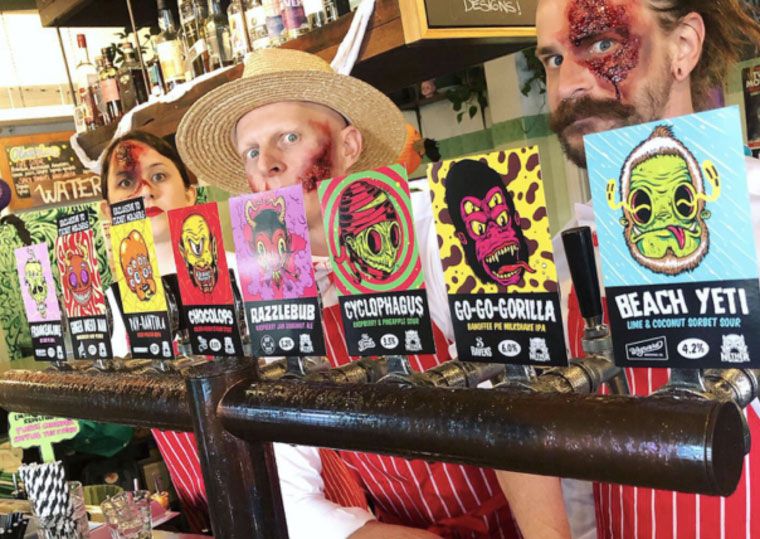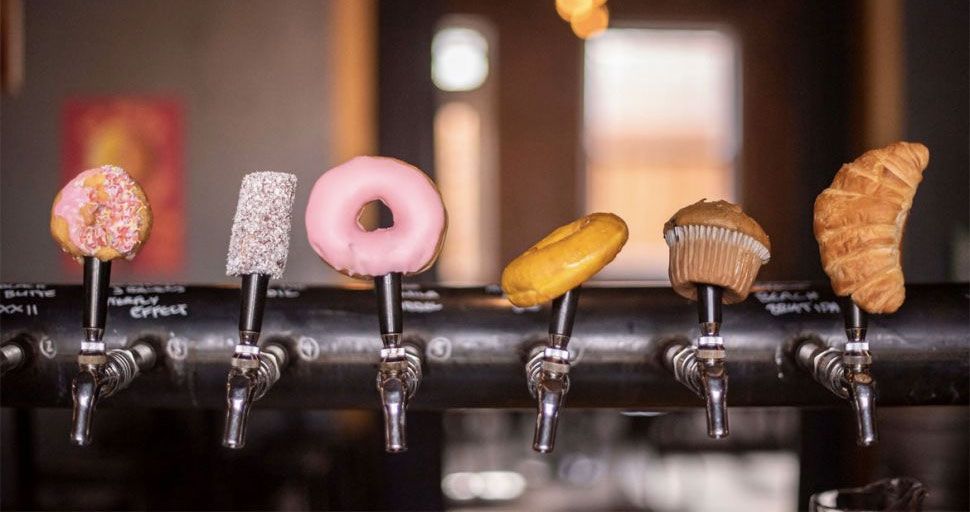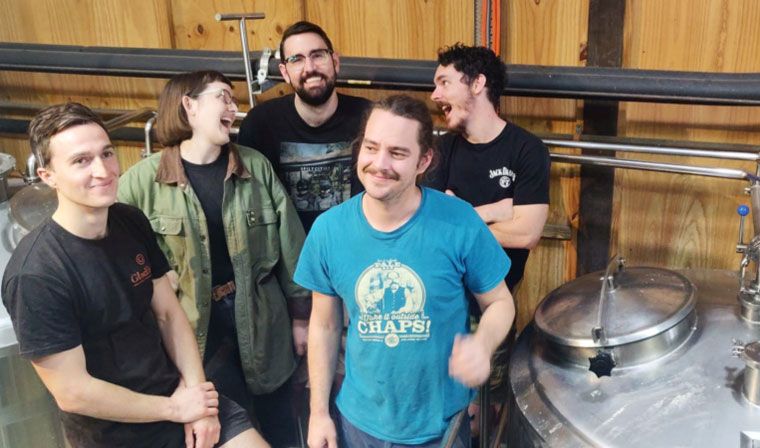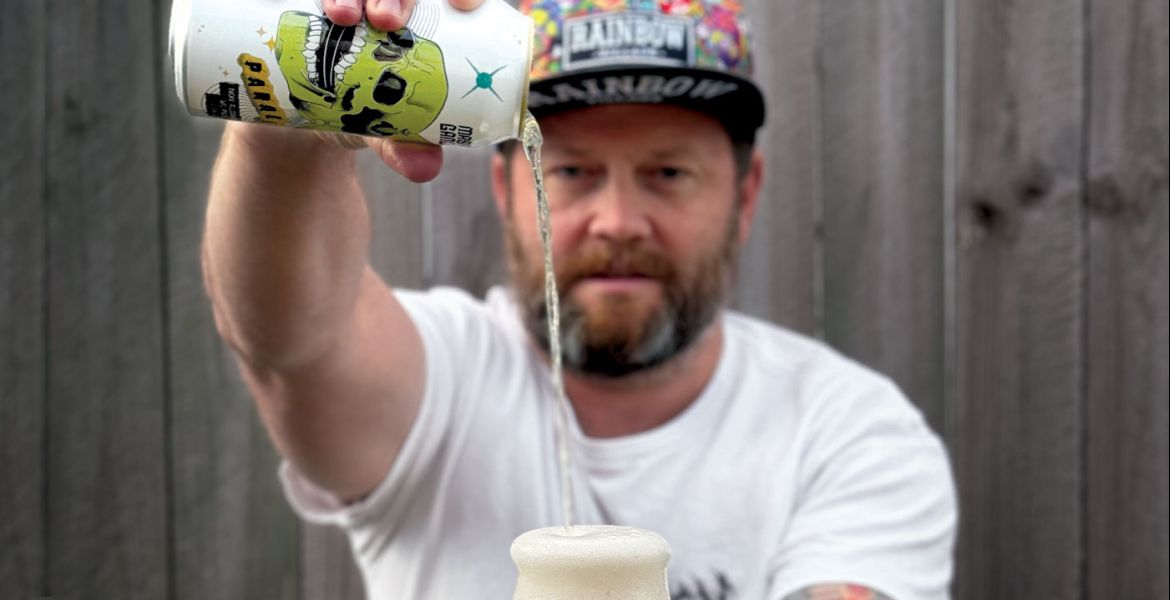If 2018 was the year of the New England IPA, there's a strong claim to be made for 2019 as the year of the dessert beer.
Sweetness is nothing new in the world of beer, with darker styles often boasting chocolate, caramel and toffee flavours, while sweet stouts – often augmented by additions like cacao, vanilla, and maple syrup – dominated the upper reaches of the people's choice polls at GABS for a number of years.
Yet, in keeping with the approach of many in the beer world, one in which rules are there to be broken – if not ignored totally – there are plenty of other styles being taken into sweeter territory: milkshake IPAs that sit within a part of the beer spectrum where traditionally bitterness has reigned; big, fruity (and sometimes creamy) sours laden with flavours more often found in a bowl on the couch after dinner than in a pint glass; and, of course, arguably the boss of the lot, the pastry stout.
They've become commonplace and popular enough to warrant entire events. Carwyn Cellars held an event at their Thornbury bar in August that saw half of their taps turned over to pastry stouts, each matched to a pastry from a local bakery or pastry chef. And, for their 2019 Monster Menagerie Beer Festival, Netherworld saw visitors to their Fortitude Valley home tuck into eight unique dessert beers from breweries around the country – and proved to be their busiest Monster Menagerie to date.
“The response was great. We ended up selling out of the 220 flights by mid-afternoon. It really showed that there is a demand for this type of beer,” Netherworld venue manager, Erin Keaveny says. “A lot of people were surprised with the beers they were tasting because they hadn’t tasted anything like it in beer before.”

Many dessert beers rely on lactose for sweetness and mouthfeel, as it’s a sugar that is not consumed by the yeast used in beer (read our feature, The Milkman Of Human Kindness, on the historical and current day use of lactose in beers here). Here, however, Netherworld, which offers a vegan menu with meat and dairy options, ensured the offerings were lactose-free, a challenge brewers overcame via the use of rolled oats and wheat, vanilla, and other specialty malts that would create the desired texture and residual sweetness.
The popularity of dessert-style beers is undeniable – when we post about them on The Crafty Pint's social pages, they invariably attract more attention than most – but not everyone is on board the sugar train. Indeed, for some, the question remains: just who is drinking them?
“For a lot of people coming into craft beer, it’s an easy access point," Erin says. "It’s something familiar: a dessert as opposed to big, piney hops and huge roasty characters, which can be a bit divisive. It’s a good entryway.
"Over the bar, when serving people who might not necessarily be into beer, you can give them a try of a milkshake IPA and people who didn’t know they liked beer say it’s delicious.”
It's a sentiment shared by Brendan O'Sullivan, head brewer at Melbourne's 3 Ravens, who claimed Champion Small/Medium Brewery at this year's Indies and have been releasing the Shake series of milkshake IPAs since the first half of 2018. For the Monster Menagerie event, they collaborated with the Netherworld team to create Go-Go-Gorilla, a Banoffee Pie Milkshake IPA.
“You don’t need a style guide or an introduction to the subtleties of beer to enjoy it," Brendan says. "A milkshake IPA and dessert beers in general are more apparent and accessible to people, especially people with a sweet tooth. Sweetness is easily more popular and accessible for a wider audience.”

He likens the rise of dessert beers and the changes that have occurred in Australian beer culture over the last five to ten years to the rise of Southern US cuisine.
“These are a lot more accessible, with simpler and obvious flavours, which aren’t necessarily more challenging. People want to taste distinct flavours," he says. "They may not be looking for a Belgian saison or a Scotch ale. People are into big, bold flavours and enjoy being able to discern the ingredients in a beer.”
While dessert beers are helping some beer drinkers discover new flavours and styles, there's also an element within the beer community less enamoured with this particular trend.
“If you’re not upsetting anyone, then you’re not trying hard enough to be creative or to try new things," is how Brendan views it. "Being disruptive is really a big part of challenging and exploring and pushing ourselves.”
Jarrett Bravo, senior brewer at Brisbane’s Newstead, readily admits lactose IPAs are “not his jam.” In collaborating with Netherworld to create the Frankenlime, a Key Lime Pie double IPA, Jarrett wanted to focus on creating a balanced beer.
“I went to the States a few years ago and had key lime pie and thought a beer would work well with the flavours, especially an IPA. You can have the citrus and the biscuit," he says.

“We played around the beer we did for GABS, I Can't Believe It's Not Milkshake IPA. For us, trying to make a beer that was milkshake-ish without the lactose, we had some experience. I wanted it to taste a certain way and worked my way back thinking how I could get those flavours into a beer with what I could get my hands on, without going down the simple routes of lactose or flavouring [and using] all-natural ingredients.”
Recent studies have shown a strong link between taste and memory. A caramel tart IPA could trigger memories of weekends at grandma’s house in a way that traditional flavours can’t, at least for the portion of the population unfamiliar with highly hopped beers. A raspberry and pineapple sour may conjure recollections of summers spent by the public pool with icy poles, while a Black Forest stout might remind you of mum’s cooking. If taste and memory are inextricably linked and these flavours can be accurately replicated in beer, then another dimension of enjoyment is added, another layer of satisfaction for those in whom such memories are rekindled.
The longevity of the broader dessert beer world remains to be seen: will they carve out a niche like New England and hazy IPAs or prove to be a flash in the pan like Brut IPAs? In their favour, there are historial antecedents: many imperial stouts, barleywines, bigger Belgian ales and their ilk have been delivering boldness and sweetness for generations, albeit in a manner less overt and ostentatious than those capturing the Instagram generation's affections today.
In all likelihood, as with any beer, much will come down to the quality of the liquid in your glass. For, while there is something undeniably eye-catching about a milkshake IPA or a coconut lime sorbet sour, as Jarrett says: “When you match flavours just right and people drink it and it blows their mind, that’s what you want.
"That’s when you’ll see them going back for more.”


















